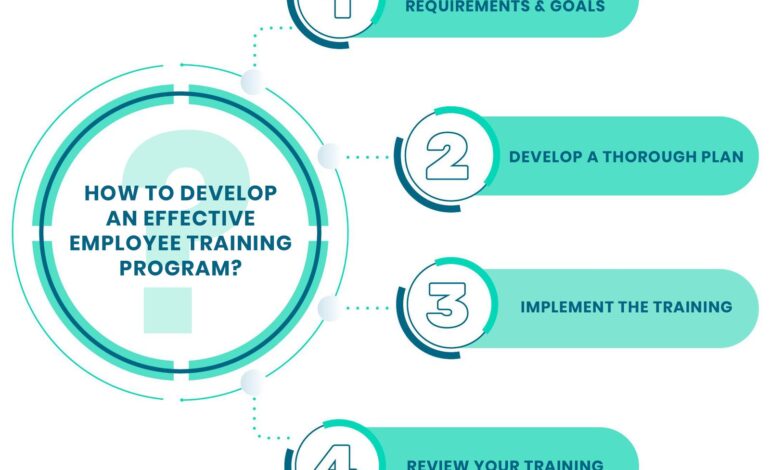Fueling Your Small Business Success: The Power of Employee Training & Development
Small businesses are the backbone of our economy, often facing unique challenges when it comes to resources – including investment in employee development. It’s a common misconception that training and development is a luxury only larger corporations can afford. However, neglecting this crucial area can severely hinder your business’s potential for growth and long-term success. This post will explore why investing in your employees’ skills is essential for small businesses, outline the benefits you can expect, and provide cost-effective training options to get you started.
Why Employee Training & Development Matters More Than Ever
The business landscape is constantly evolving. New technologies emerge, customer expectations shift, and competition intensifies. To stay ahead of the curve, your employees need to be equipped with the knowledge and skills required to adapt and excel in this dynamic environment. Simply put, stagnant skills lead to stagnant growth.
Many small business owners worry about the immediate costs associated with training. However, failing to invest in employee development carries a far greater long-term cost. Consider the potential consequences: decreased productivity, lower quality work, increased errors, higher employee turnover, and ultimately, reduced profitability. A well-trained workforce is an investment—not an expense.
The Tangible Benefits of Employee Training & Development
Let’s delve into the specific benefits you can expect when prioritizing employee training and development within your small business:
- Increased Productivity: Trained employees are more efficient. They understand their roles better, use tools effectively, and make fewer mistakes, leading to a significant boost in overall productivity.
- Improved Quality of Work: Enhanced skills directly translate to higher quality products or services. This leads to greater customer satisfaction and strengthens your brand reputation.
- Reduced Employee Turnover: Investing in employees demonstrates that you value their growth and development, fostering loyalty. Employees are less likely to leave a company where they feel supported and have opportunities for advancement. High turnover is expensive – training can help curb those costs.
- Enhanced Innovation & Problem-Solving: Training often exposes employees to new ideas and approaches, stimulating creativity and enabling them to solve problems more effectively.
- Better Customer Service: Well-trained employees are better equipped to handle customer inquiries, resolve issues promptly, and provide a positive experience – crucial for retaining customers.
- Increased Profitability: All of the above benefits ultimately contribute to increased profitability. Improved productivity, quality, and customer service all translate to higher revenue and lower costs.
- Adaptation to New Technologies & Processes: Training ensures your team can effectively utilize new software, equipment, or processes, maximizing their efficiency and keeping you competitive.
Cost-Effective Training Options for Small Businesses
The good news is that employee training doesn’t have to break the bank. Here are several cost-effective options suitable for small businesses:

1. Online Courses & Platforms
Numerous online platforms offer a vast library of courses on virtually any topic imaginable. Platforms like Coursera, Udemy, LinkedIn Learning, and Skillshare provide affordable access to high-quality training materials.
- Pros: Highly accessible, self-paced learning, often very budget-friendly.
- Cons: Requires employee discipline and motivation; limited interaction with instructors (though many platforms offer forums or Q&A).
2. Mentorship Programs
Pairing experienced employees with newer ones creates a valuable mentorship opportunity. This allows for knowledge transfer, skill development, and provides personalized guidance.
- Pros: Low-cost, fosters relationships within the company, provides tailored learning experiences.
- Cons: Requires careful planning and matching of mentors and mentees; mentor needs to be properly prepared.
3. Cross-Training
Having employees learn skills outside their primary roles increases team versatility and resilience. For example, a customer service representative could receive basic technical training, or an accountant could learn the fundamentals of marketing.
- Pros: Increases flexibility within your workforce, identifies hidden talents, provides backup coverage for different departments.
- Cons: Requires careful scheduling and may temporarily reduce productivity in certain areas.
4. Lunch & Learn Sessions
Organize informal training sessions during lunch breaks or after work hours. Employees can share their expertise with colleagues, bringing in guest speakers, or watching relevant videos.
- Pros: Very low cost, encourages peer-to-peer learning, flexible scheduling.
- Cons: Requires someone to coordinate the sessions and ensure participation; may not be suitable for complex topics.
5. Government-Funded Training Programs
Many governments offer grants or subsidies for small business training programs. Research what’s available in your area – these can significantly reduce your costs.
- Pros: Potentially substantial cost savings, access to expert trainers and resources.
- Cons: Application process can be competitive; may have specific requirements or limitations.
6. Utilizing Free Resources
Don’t overlook the wealth of free information available online – blog posts (like this one!), webinars, tutorials, and open-source software documentation can all contribute to employee skill development.
Creating a Culture of Continuous Learning
Employee training and development shouldn’t be a one-off event. It should be an ongoing process embedded in your company culture. Encourage employees to seek out new knowledge, provide opportunities for professional growth, and celebrate their achievements. By fostering a culture of continuous learning, you’ll not only improve your business performance but also create a more engaged and motivated workforce – setting the stage for long-term success.
Investing in your employees is investing in your future. Don’t wait—start building a stronger, more skilled team today!




